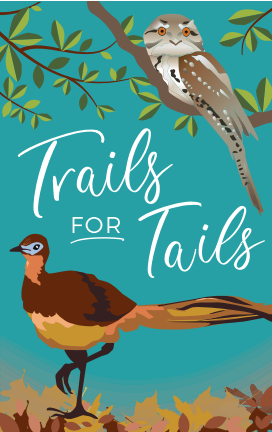Mary's Story
Mary's Story
“Us humans are dependent on plant life, so when we come across plants that are happy it’s very joyful”
Mary, Ziji and Jonathan arrived in the small area of Wanganui on the far north coast of NSW by what felt like magic. They were captivated by the life and diversity on their property. The backdrop of Nightcap World Heritage National Park gave a tremendous reserve of plants and animals. There were permanent creeks with moss covered boulders, waterfalls, private pools where no sun ever entered. It was and is sacred and special. That was almost a decade ago.
Living here has brought all of them into their senses, to see more, to stop look and listen, to smell where a plant is flowering and where the rats are nesting. Mary is becoming wild like the other inhabitants here and is joining the forest community. Living here gives us all the invitation to find what we really love to do, as the native animals and plants do, and to express that in our lives.
Naively Mary felt restoring the land to its full rainforest glory was a project for her. She had no idea how much work would be needed to get the weeds under control. She began, like the Bradley sisters who pioneered the chem free bush regen movement in Australia, just doing the amount she could, by hand, using kitchen knives to uproot giant devil figs, using a brush cutter and long handled clippers to clear lantana. Ziji contributed by enthusing Helpx volunteers to come and stay often for months at a time. These were usually young couples who had never been in rainforest before, and who also became entranced by the wild places and the chance to contribute. On one of the steepest properties in the valley, the work is hard. They now employ bush regenerators once a month, which is a high point of their regen calendar.
Sadly, in the last few years Mary and Ziji have noticed a decline in animals on the property, particularly small mammals and insects. They no longer need to wrap pumpkins to protect them from marauding native rodents, the antechinus have moved out of the house and the family washes the car less - not so many bugs on the windscreen these days.
“Life and its diversity are the most sacred thing there is” Mary says. She knows the work they have been doing to restore habitat is helping sustain the biodiversity values of this part of the Border Ranges Global Biodiversity Hotspot. But they are still challenged about the recent changes they have seen.
During the 2019 bushfires, the property suffered. Around 5 hectares of steep forest adjoining Nightcap National Park was burnt, including rainforest. The remainder of the land was under ember attack. It was a close call. Sometime after, Mary reached out to the Trails for Tails project concerned that Albert’s Lyrebird may have been lost from the property.
So out we went, set up the equipment and waited. It didn’t take long before catching Albert’s Lyrebird on audio. Following our most recent visit, we are happy to report a beautiful male and female Lyrebird caught on camera. Success!!
We asked Mary why she wanted to be a part of the project: “Because I often don’t see things that occur when I’m not here, it’s such a treat to be certain of what’s happening,” she says. As for what's happened to the Antechinus? We're not sure, but we will keep looking…
Welcome Mary, it’s great to have you as part of the project.

